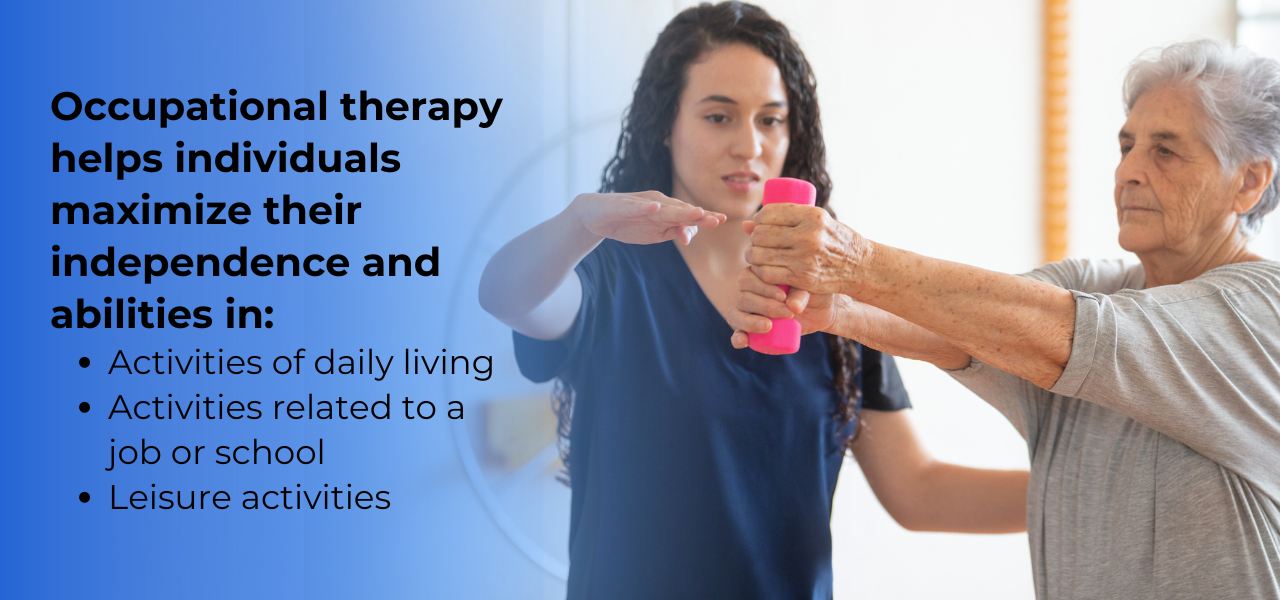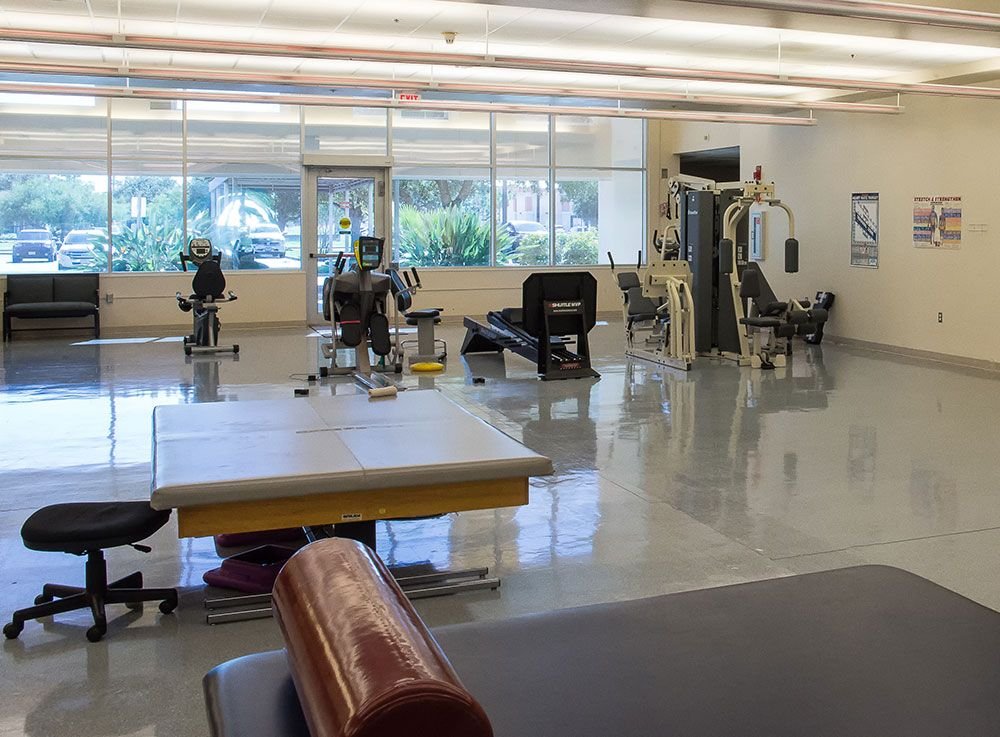The Path to Independence: Understanding Occupational Therapy
When an individual experiences an illness or injury or is diagnosed with a chronic health condition, their abilities to care for themselves or do things that they once did daily might become difficult or impossible without help. Occupational therapists specialize in assisting people with regaining as many of those abilities as possible.
While not as widely recognized as its counterpart physical therapy, at hospitals across the country, including PAM Health, occupational therapy (OT) plays a huge role in a patient’s rehabilitation and, in the long-term, their quality of life, happiness, and overall well-being.
Explore Health Services Offered by PAM Health
What is occupational therapy?
Occupational therapy consists of a range of exercises, techniques, and approaches, all geared toward maximizing a person’s ability to independently do activities that are most meaningful to their life. Areas of focus with certified occupational therapists and assistants often include:
- Activities of daily living (ADLs)/self-care tasks like bathing, dressing, feeding themselves, caring for their home, and more
- Activities related to their job or school so they can safely and successfully return
- Leisure activities
Maximizing a person’s independence and safety in completing these activities is also a key aspect of OT. Depending on the person’s unique goals and needs, this can include:
- Adaptive equipment (such as a shower chair) and/or modified set-ups (such as a specialized set-up for teeth-brushing or a modified workstation)
- Techniques to help with memory, concentration, executive functioning (i.e., decision-making), and other cognitive skills
- Daily routines to reinforce skills
- Strategies and accommodations to prevent falls and evaluating safety and accessibility at home
OT professionals also work with caregivers and loved ones, so they are properly equipped to provide support to patients outside therapy sessions. Occupational therapy takes a holistic approach to rehabilitation that encompasses physical and mental health and addresses each patient’s unique social and environmental circumstances.

Who can benefit from occupational therapy?
A core goal of occupational therapy is maximizing quality of life for someone with a disability or chronic condition, be it mental or physical. In some cases, like for those living with lifelong conditions like cerebral palsy, this can look like ongoing therapy for support with adaptive equipment and prolonged independence.
If a person has experienced an accident or illness or developed a condition later in life, OT can help them cope with and improve some of their lost abilities through rehabilitation. Some such conditions include amputation, stroke, brain and spinal cord injuries, and orthopedic conditions. One example is Therese Sweatt, a former patient at PAM Health Rehabilitation Hospital of Greater Indiana, who needed rehab to help her cope with the effects, including lost left peripheral vision, of an inoperable but benign brain tumor. Among other things, occupational therapy helped Ms. Sweatt with techniques to compensate for and even regain some of her lost vision so she could read again.
Read Ms. Sweatt’s full story here.
Other areas where OT can help are with children requiring intervention during toddlerhood or in school; for older patients to maximize their safety at home; and with clients with developmental disabilities or mental health conditions.
Occupational therapy vs. physical therapy – what’s the difference?
Occupational therapy shares some similarities with physical therapy, although they are distinct healthcare fields. At PAM Health, they often work hand-in-hand – and sometimes with other therapeutic specialties - to provide comprehensive rehabilitation and optimize recovery after an illness or injury. While physical therapy focuses mainly on improving a patient’s mobility and strength, occupational therapy emphasizes strengthening one’s ability to do everyday tasks.
For someone recovering from a stroke, for example, physical therapy could help strengthen muscles affected by the stroke and improve their ability to move around. If the stroke impacted their right side and they are right-handed, occupational therapy might help them learn how to use their left hand to brush their teeth, write, etc., or help them regain the use of their right arm and hand again. Clearly, both physical and occupational therapy support each other.
PAM Health’s approach to occupational therapy
At PAM Health, we offer both inpatient and outpatient* occupational therapy. Our OT professionals, including certified occupational therapists and occupational therapy assistants, will evaluate you upon admission, focusing on your unique goals and needs. Some considerations may include the set-up of your home, whether you have help from family members or other caregivers at home, the activities that bring you joy, and your goals for returning to work. Then, our expert team will determine a customized plan for your occupational therapy that fits with your other medical and rehabilitation needs with us. Our interdisciplinary approach ensures that your occupational therapy team is always coordinating with the other departments involved in your care, such as physical, speech, and respiratory therapy, nursing, and doctors.
Occupational therapy is one of the many valuable tools in our rehabilitation toolbox to help patients maximize their potential after illness or injury.

Find A Location Near You
Find a location near you to start your inpatient or outpatient occupational therapy.
Find A Location*Not all locations offer outpatient therapy.
Bibliography:
“What Is Occupational Therapy?” Aota.Org, American Occupational Therapy Association, www.aota.org/about/what-is-ot. Accessed 26 Apr. 2024.
“Occupational Therapy vs. Physical Therapy: What to Know.” Healthline. Retrieved April 25, 2024, from https://www.healthline.com/health/occupational-therapy-vs-physical-therapy
Bureau of Labor Statistics, U.S. Department of Labor, Occupational Outlook Handbook, Occupational Therapists,
at https://www.bls.gov/ooh/healthcare/occupational-therapists.htm (visited April 17, 2024).